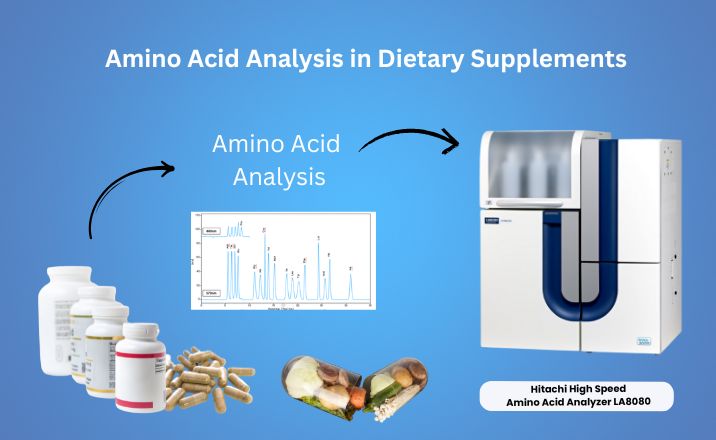Decoding Nutritional Food Labelling: A Comprehensive Guide to Understanding Food Labels.

Understanding Nutritional Food Labelling
Summary
- This blog on nutritional food labelling provides a comprehensive guide, emphasizing the significance of understanding food labels and complying with FSSAI guidelines.
- It comprehensively explores different elements of a food label, encompassing allergen information, regulations for both vegetarian and non-vegetarian products, and the declaration of additives, among other details.
- The breakdown of the nutrition facts label, highlighting serving sizes, calorie content, essential nutrients, and Percent Daily Value, adds clarity for consumers.
- It concludes by showcasing why Envirocare Labs is a reliable choice for nutritional labelling services due to its extensive experience, accreditation, reliable results, quick turn-around time, and comprehensive testing services.
Overview
In a world where choices about what we eat are abundant and diverse, the importance of understanding the nutritional content of our food cannot be overstated. Nutrition Labels describe the nutrient content of a food to help the consumer make healthier food choices. Nutrition labels serve as our trusty companions, providing valuable insights into the composition of the products that find their way into our shopping carts.
In India, the Food Safety and Standards Authority of India (FSSAI), established under the Food Safety and Standards Act, sets standards for food articles and regulates their manufacture, storage, distribution, sale, and import. Its goal is to ensure the availability of safe and wholesome food for human consumption.
Why is Nutritional Labelling/ Food Labelling Important?
- Ensuring Safety: Nutritional food labelling keeps consumers safe by providing crucial information about the products they buy.
- Promoting Health: Nutritional information on labels aids in making healthier food choices, contributing to overall well-being.
- Allergen Awareness: Nutritional Labels help in detecting ingredients that might trigger harmful reactions for those with allergies.
- Preventing Deception: It acts as a safeguard against purchasing misrepresented or falsely labelled products.
- Portion Control: By indicating portion sizes, labels assist in preventing food wastage.
Decoding a Food Label: Exploring Each Section
Source: https://www.fssai.gov.in
In the dynamic world of food regulations, understanding the guidelines for FSSAI Nutritional Labelling is paramount for every food business. These regulations are not just legal obligations; they are a commitment to consumer safety, information, and overall well-being.
- The Name of Food
According to FSSAI standards, it should be clear, concise, and printed in an easily understandable font, ensuring that consumers can make informed choices effortlessly.
- List of Ingredients
Manufacturers are required to provide a clear heading, such as “Ingredients/List of Ingredients,” for the list of components used in a product. This transparency allows consumers to make informed choices aligned with their preferences and dietary needs, as all utilized ingredients must be disclosed, fostering trust in the product.
- Nutritional information
Nutritional information functions as a detailed description intended to inform consumers about the nutritional profile of the food. It encompasses various elements such as ‘sugars,’ ‘added sugars,’ ‘fat,’ ‘dietary fibre,’ ‘nutrient,’ ‘Nutritional Information per 100g or 100ml,’ and ‘Calculation of Nutrients.’ Additionally, this information can be conveyed using a Barcode/Global Trade Identification Number (GTIN).
- Declaration regarding Veg or Non-veg
In the case of packages containing Non-Vegetarian Food, the symbol must include a filled brown triangle enclosed within a brown square. Conversely, for packages of Vegetarian Food, the symbol should consist of a filled green circle within a green square.

5. Declaration regarding Food Additives
Enhancing taste, and colour, or preserving freshness is common through the use of additives. FSSAI requires manufacturers to declare these additives prominently on the label, fostering honesty and transparency in the product’s composition.
6. Declaration of name and complete address
The label must include the name and full address of the brand owner. In the case of imported food into India, the food package should also display the name and complete address of the importer in India.
7. FSSAI logo and license number
The FSSAI logo and license number of the brand owner must be displayed on the label as per FSSAI guidelines.
8. Net quantity, Retail Sale Price and Consumer Care details
The declaration and method of stating Net quantity, Retail Sale Price, and Consumer Care details should adhere to the specified guidelines.
9. Lot/Code/Batch identification
The label must include a batch number, code number, or lot number, as per the regulations.
10. Date Marking
The label should indicate the “Date of manufacture or packaging” and “Expiry/Use by.” Optionally, the term “Best before” may also be employed as supplementary information.
11. Labelling of Imported Foods
The labelling of imported foods must adhere to the Food Safety and Standards (Import) Regulations, 2017, in addition to the specifications outlined in these regulations.
12. Country of Origin for Imported Foods
The label of food imported into India must include a declaration of the country of origin.
13. Instructions for use
Incorporate usage instructions on the label, including reconstitution when applicable, to ensure the correct utilization of the food. This is especially crucial for products that necessitate specific guidance for health and safety reasons, such as ‘Refrigerate after opening.’
14. Declaration regarding Food allergen
The section on allergen information distinctly emphasizes the existence of common allergens in the product. This information is crucial for individuals with food allergies or intolerances, as even minimal traces of allergens can trigger severe allergic reactions. Common allergens include peanuts, tree nuts (e.g. almonds, cashews, and walnuts), soy, Milk & Milk products, Cereals containing gluten (i.e., wheat, rye, barley, and oats), Eggs and egg products, Fish and fish products, Crustacean and their products, Sulphite in concentrations of 10 mg/kg or more.
15. Symbol Requirement for Non-Food Retail Items
Retail packages, including Pooja water, Ghee for diya, and Pooja oil, must bear a specified symbol—a black cross within a square outlined in black. This ensures clear identification of items not meant for human consumption.
Interpreting and Utilizing the Nutrition Facts Label
Source: https://www.fda.gov/food/nutrition-facts-label/how-understand-and-use-nutrition-facts-label
Key features of the Nutrition Facts label
- Serving Information
Serving sizes are standardized for ease of comparing similar foods, presented in familiar units such as cups or pieces, and supplemented with the metric amount, for example, the number of grams (g).
- Calories
Calories offer a gauge of the energy derived from consuming a serving of the food. The recommended daily intake of 2,000 calories continues to be a common guideline for nutritional advice.
- Nutrients
Nutrients to Limit: Intake of Saturated Fat, Sodium, and Added Sugars should be minimized, as these nutrients are associated with potential health concerns
Added Sugars: Total Sugars on labels cover natural sugars and additives. Specifically, added sugars refer to sugars incorporated during food processing, including sweeteners, syrups, honey, and concentrated fruit or vegetable juices.
Essential Nutrients: Dietary Fiber, Vitamin D, Calcium, Iron, and Potassium are key nutrients beneficial for overall health.
- The Percent Daily Value (%DV)
The Percent Daily Value (%DV) represents the percentage of the Daily Value for each nutrient in a serving of the food. It illustrates how much a nutrient in a serving contributes to a total daily diet. A general guide to %DV is as follows:
• Low: A nutrient content per serving of 5% DV or less.
• High: A nutrient content per serving of 20% DV or more.
Decoding Food Label Abbreviations
- DV (Daily Value): Percentage of a nutrient in one serving based on daily recommended intake for a 2,000-calorie diet.
- %DV (Percent Daily Value): Contribution of a nutrient in one serving toward the total daily recommended intake.
- IU (International Units): Commonly employed to measure fat-soluble vitamins such as Vitamin A, D, and E.
- RDI (Reference Daily Intake): Daily recommended intake based on a 2,000-calorie diet.
- AI (Adequate Intake): Represents a likely adequate nutrient intake when no Recommended Dietary Allowance (RDA) is established.
- GMO (Genetically Modified Organism): Indicates the presence of genetically modified ingredients.
Why Opt for Envirocare Labs for Nutritional Labelling Services?
✅ Over 43+ Years of Excellence: Benefit from our extensive experience in testing, analysis, and certification, reflecting our commitment to quality.
✅ Setting Quality Standards: Accredited under ISO/IEC 17025:2017 by NABL, and certified for QMS, EMS, and OSHAS, we’re recognized by authorities including MoEF, MoFPI, FSSAI, BIS, EIC, APEDA, AGMARK, GAFTA, SOPA, IOPEPC and, organic food testing as per Jaivik Bharat, setting a benchmark in quality testing and certification.
✅ Trustworthy Results: Trust in accurate and dependable results, a testament to our unwavering commitment to precision.
✅ Fast Turn-Around Time (TAT): Experience efficiency with our swift turn-around time, ensuring timely delivery of services.
✅ Comprehensive Food Testing Services for In-Depth Analysis: Experience thorough food testing with our extensive range of services covering Allergen Test, Fatty Acid Profile, Cholesterol, Vitamins & Minerals, Food Additives, Preservatives, Adulterants, Flavour Profiling, Toxins Test, Microbiology Testing, and more.
References:
- https://www.fssai.gov.in
- https://www.fda.gov/food/nutrition-facts-label/how-understand-and-use-nutrition-facts-labelTop of Form
Conclusion:
In conclusion, understanding nutritional labels is essential for making informed and healthy food choices, and compliance with FSSAI guidelines ensures consumer safety. This comprehensive guide decodes various elements of food labels, emphasizing their role in allergen awareness, preventing deception, and promoting overall well-being. Envirocare Labs emerges as a reliable choice for nutritional labelling services, boasting over 43 years of excellence, accreditation, trustworthy results, fast turn-around time, and a comprehensive range of food testing services. Choose Envirocare Labs for accurate and dependable nutritional food testing services that set industry benchmarks.
Visit the website for more information: https://envirocarelabs.com/food-testing-lab/.






